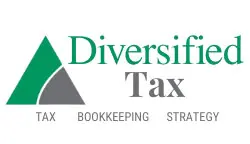What is Regressive Tax?
Table of Contents
What is Regressive Tax?
In the realm of taxation, understanding the different types of tax systems is integral. One such system is known as a regressive tax. But what exactly does it mean? In simple terms, a regressive tax is a system that places a higher burden on low-income individuals compared to the wealthy. While it may sound counterintuitive, this type of taxation follows a decreasing rate pattern as income increases. As a result, those with less disposable income end up paying a larger percentage of their earnings in taxes. This concept sparks debates surrounding inequality and fairness within the tax system.
Definition and Explanation of Regressive Tax
A regressive tax is characterized by its inverse relationship with income. In other words, as income increases, the percentage of income paid in taxes decreases. This is in contrast to a progressive tax system, where the tax rate increases as income rises. While progressive taxes aim to redistribute wealth and reduce income inequality, regressive taxes have the opposite effect, placing a heavier burden on low-income individuals.
The regressive tax system often takes the form of indirect taxes, such as sales tax or excise tax. These taxes are levied on goods and services, and everyone pays the same rate regardless of their income level. For example, a 10% sales tax on a $10,000 luxury item would result in a $1,000 tax burden for both a low-income earner and a high-income earner. However, for the low-income earner, this tax represents a larger proportion of their overall income.
Regressive taxes can also be seen in payroll taxes, such as Social Security and Medicare taxes. These taxes are generally flat, meaning that everyone pays the same percentage regardless of income. While these taxes fund important social programs, they can disproportionately affect low-income individuals who rely on a larger portion of their income for basic necessities.
In summary, regressive taxes place a higher burden on low-income individuals compared to the wealthy. This is due to the decreasing rate pattern, where the tax rate decreases as income increases. Indirect taxes and flat payroll taxes are common examples of regressive taxes.
Examples of Regressive Tax Systems
To better understand regressive taxes, let’s examine a few examples of regressive tax systems that exist in various countries around the world.
One common example is the sales tax system in the United States. Different states have different sales tax rates, but they are generally not based on income. This means that regardless of one’s income level, they will pay the same sales tax rate on goods and services. This can have a more significant impact on low-income individuals who must allocate a larger portion of their income towards essential purchases.
Another example is the value-added tax (VAT) system used in many European countries. The VAT is a consumption tax that is applied to the value added at each stage of production. While the VAT is typically a flat rate for all individuals, it can affect low-income individuals more significantly as they tend to spend a larger proportion of their income on goods and services.
In some countries, gasoline taxes are also considered regressive. Since the tax is applied at a flat rate per gallon, individuals with lower incomes who rely heavily on transportation may end up paying a larger proportion of their income in gasoline taxes compared to wealthier individuals.
These examples highlight the regressive nature of certain tax systems and their potential impact on different income groups.
Arguments for and Against Regressive Tax
The implementation of regressive tax systems has sparked ongoing debates, with proponents and opponents presenting various arguments to support their positions.
One argument in favor of regressive taxes is that they are simple and easy to administer. Since the tax rates are the same for everyone, there is no need for complex calculations or income reporting. This simplicity reduces administrative costs and minimizes the potential for tax evasion.
Proponents of regressive taxes also argue that they promote economic growth. By taxing consumption rather than income or wealth, individuals are encouraged to save and invest, which can stimulate economic activity and investment. This can lead to greater job creation and overall prosperity.
On the other hand, opponents of regressive taxes argue that they exacerbate income inequality. Since low-income individuals already have a smaller disposable income, a higher tax burden can further limit their ability to meet basic needs and improve their economic situation. This creates a cycle of poverty and hinders social mobility.
Critics also argue that regressive tax systems are inherently unfair. They believe that those who can afford to pay more should contribute a larger proportion of their income in taxes, as it aligns with principles of equity and social justice.
Ultimately, the arguments for and against regressive taxes revolve around issues of simplicity, economic impact, income inequality, and fairness within the tax system.
Impact of Regressive Tax on Different Income Groups
The regressive tax system has a disproportionate impact on individuals with lower incomes. This can be seen when comparing the tax burden of different income groups.
For low-income individuals, the tax burden can be particularly challenging. Since they have a smaller disposable income, even a small percentage of tax can have a significant impact on their ability to cover basic needs. This can lead to a higher level of financial stress and a reduced ability to save or invest for the future.
Middle-income individuals also face challenges with regressive taxes. While they may have a higher disposable income than low-income individuals, the tax burden can still limit their ability to save for major expenses or invest in their long-term financial goals.
In contrast, high-income individuals experience a relatively smaller impact from regressive taxes. Since they have a higher disposable income, the percentage of their income paid in taxes is lower, allowing for greater financial flexibility and the ability to accumulate wealth.
Overall, the impact of regressive taxes on different income groups highlights the potential for increased income inequality and limited economic mobility.
Comparison of Regressive Tax with Other Tax Systems
To fully understand the implications of regressive taxes, it is important to compare them with other tax systems, namely progressive and proportional taxes.
Progressive taxes, as the name suggests, follow a progressive rate pattern where the tax rate increases as income rises. This type of tax system aims to redistribute wealth and reduce income inequality by placing a higher burden on high-income individuals. Progressive taxes often involve tax brackets, where individuals are taxed at different rates based on their income level.
Proportional taxes, also known as flat taxes, apply a consistent tax rate to all individuals regardless of their income level. This means that everyone pays the same percentage of their income in taxes. Proportional taxes are often seen as fairer than regressive taxes since they do not disproportionately burden low-income individuals. However, critics argue that proportional taxes may still be regressive in practice, as the burden can be heavier on low-income individuals who rely on a larger portion of their income for necessities.
When comparing regressive taxes with progressive and proportional taxes, it becomes clear that regressive taxes can contribute to income inequality and hinder economic mobility. Progressive taxes, on the other hand, aim to address these issues by redistributing wealth. Proportional taxes fall somewhere in between, offering a simpler tax system but potentially lacking in fairness.
Historical Context and Usage of Regressive Tax
The concept of regressive taxation has a long history, with examples dating back to ancient civilizations. In ancient Rome, for instance, regressive taxes were levied on goods such as salt and wine, disproportionately affecting the lower classes.
Throughout history, regressive tax systems have been used for various purposes, including funding wars, maintaining social hierarchies, and financing government expenditures. In some cases, regressive taxes have been implemented to generate revenue quickly, as they have the potential to collect significant amounts of money due to their broad base.
However, the use of regressive taxes has also faced criticism and resistance. In times of social unrest or economic inequality, calls for tax reform to address regressive systems have emerged. These movements often advocate for progressive tax systems that take into account an individual’s ability to pay and aim to promote a fairer distribution of wealth.
Attempts to Reform Regressive Tax Systems
In response to the criticisms and concerns surrounding regressive tax systems, there have been attempts to reform and mitigate their impact on low-income individuals.
One approach is to introduce exemptions or deductions for essential goods and services. For example, basic food items or healthcare services could be exempt from sales tax or subject to a reduced rate. This ensures that low-income individuals are not burdened by taxes on necessities.
Another strategy is to implement tax credits or income-based rebates. These mechanisms provide financial relief for low-income individuals by reducing their overall tax burden or providing direct cash transfers. By targeting assistance to those who need it most, these measures help mitigate the regressive nature of the tax system.
Additionally, some countries have explored the possibility of introducing more progressive tax systems. This involves implementing higher tax rates for high-income individuals and adjusting tax brackets to ensure a fairer distribution of the tax burden. These reforms aim to address income inequality and promote social equity.
Regressive Tax in Different Countries
Regressive tax systems can be found in various countries around the world, each with its own unique characteristics and implications.
In the United States, the sales tax system varies by state, with rates ranging from 0% to over 10%. While sales tax is generally considered regressive, some states have implemented measures to reduce the impact on low-income individuals. For example, some states exempt certain necessities from sales tax or have a lower rate for essential goods.
In European countries, the value-added tax (VAT) is a common form of regressive taxation. VAT rates can vary by country, but they are generally applied to a wide range of goods and services. Some countries have implemented reduced VAT rates for essential items such as food, while others have additional exemptions or reduced rates for certain sectors.
In countries like India, regressive taxes can take the form of indirect taxes such as the Goods and Services Tax (GST). The GST is a comprehensive indirect tax levied on the supply of goods and services throughout the country. While efforts have been made to introduce multiple tax slabs to reduce the regressive impact, concerns remain regarding its impact on low-income individuals.
While regressive tax systems exist in different countries, the extent of their impact and the measures taken to address their regressive nature vary. It is crucial to consider the specific context and policies of each country when analyzing the implications of regressive taxes.
Conclusion and Final Thoughts on Regressive Tax
Regressive taxes, with their decreasing rate pattern, place a higher burden on low-income individuals compared to the wealthy. These taxes are often levied on goods and services, and everyone pays the same rate regardless of their income level. While proponents argue that regressive taxes are simple to administer and promote economic growth, critics highlight the potential for increased income inequality and the unfair burden on low-income individuals.
Examples of regressive tax systems can be found in countries around the world, such as sales taxes in the United States and value-added taxes in Europe. Attempts to reform regressive tax systems include exemptions for essential goods, tax credits for low-income individuals, and the introduction of more progressive tax systems.
By understanding the intricacies of regressive taxes and their impact on different income groups, individuals can critically analyze the advantages and disadvantages of this type of taxation. Ultimately, the debate surrounding regressive taxes revolves around issues of simplicity, economic impact, income inequality, and fairness within the tax system. As discussions continue, it is important to strive for tax systems that promote social equity and ensure a fair distribution of the tax burden.




